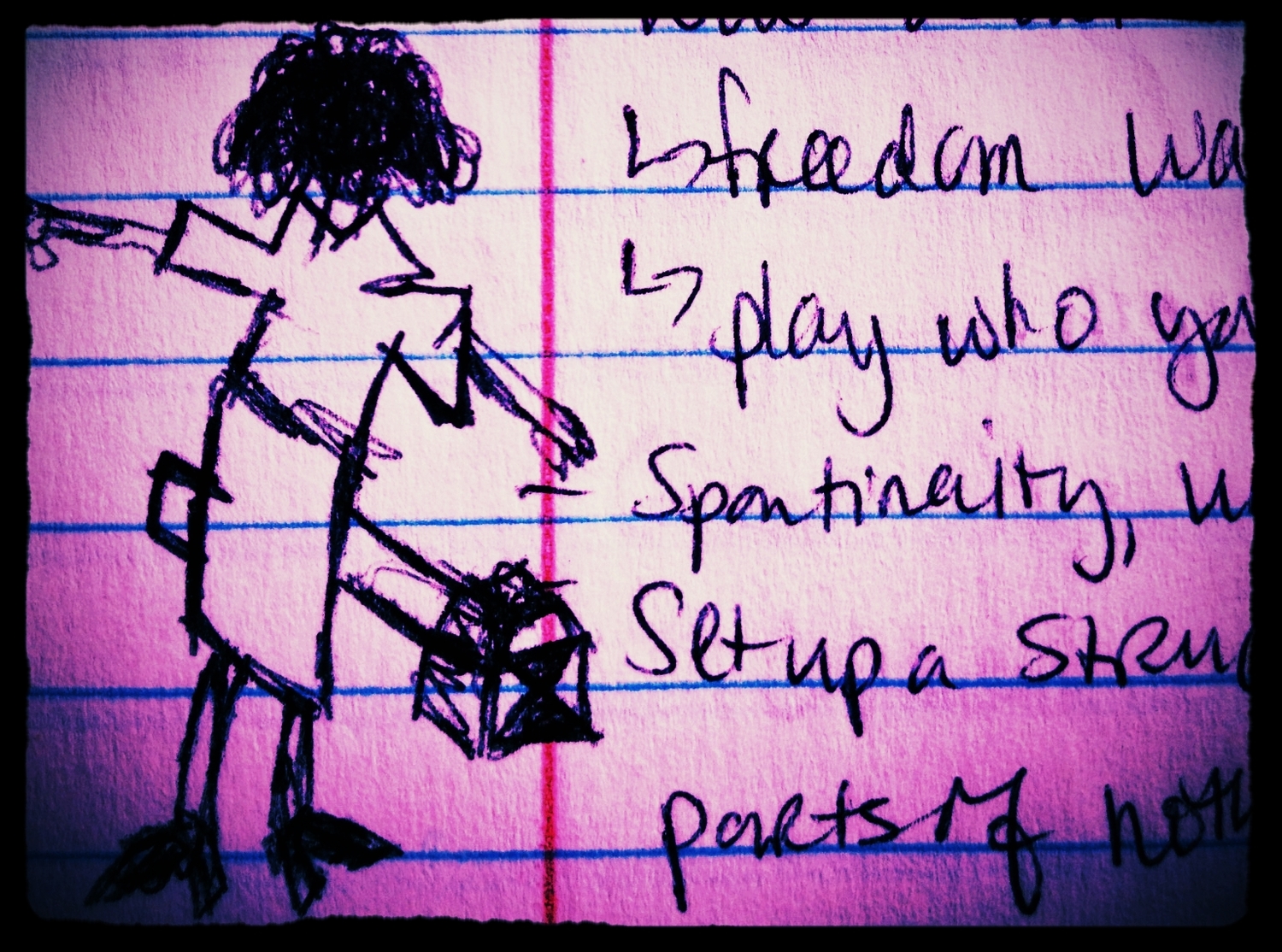The Evolution of My Curriculum
Students doing a problem scavenger hunt.
Working with individuals
Knowing the needs, interests, and strengths of my students, as well as the focus of the school are essentials when creating lessons and assessments for my students. After learning and implementing Backwards Design and aspects of Project- Based Learning, I have seen much more growth in my students. The Common Core State Standards support the inquiry based method of teaching that I believe is at the root of real learning. When I plan for students to ask and answer their own questions while using authentic texts and real problems, they amaze me with their curiosity. Since my units include detailed rubrics themed in a real world issue or scenario, they understand the answer to “why should we learn this?” before they can even ask.
Recently, I've worked hard to incorporate technology, in particular Google Drive, The Teaching Channel, Khan Academy, Twitter, Edmodo, and iPads in my instruction and mentoring. In addition to playing around with Prezi, I'm eager to create a ShowMe or a podcast to give students or teachers access to the classroom content after hours. I'm also very interested in applying a gaming mindset/framework into my next classroom and have been supporting new teachers around learning about ways to "gamify" instruction to keep students engaged, increase rigor, and differentiate.
USING GAMES TO DIFFERENTIATE
After a year of fully-released mentoring, I returned to the classroom with a new passion to implement differentiation at a high level. Offering students choice of which questions to answer on assessments continues to be one of the most effective for both me and other teachers. In addition to telling me what students know, the frequently skipped or unattempted questions give me feedback around where my students lack confidence. As an added bonus, offering choice also supports students in paying attention to classmates' presentations and allows for the teacher to meet different learning and cognitive styles of students.
Below are samples of some choice assessments that I and new teachers that I have mentored have created. The samples range from informal to formal assessments and represent a multitude of contents and grades. To learn more about choice assessments, or choice boards, check out the Dare to Differentiate wikispace. It's an amazing resources that many teachers find valuable while planning.
Tic-Tac-Toe Quiz - Me (Algebra 1)
Spanish Quiz - Elementary Spanish Teacher
Claim and Evidence Sort - 12th grade English Teacher
Leveled Genetics Unit - 9th grade Biology Teacher
Newspaper Writing Project with Choice - 10th grade English Teacher
Tic-Tac-Toe Unit Project - Me (French 1)
Mini Unit Exam with Choice - 11th grade Physics Teacher
Unit Exam with Choice - Me (Algebra 1)
PLANNING AUTHENTIC ASSESSMENTS TO ENGAGE ALL LEARNERS
As a resident of Chicago, a map collector, and a mathematically minded person, the original idea for this lesson, "Our Mathematical Neighborhood," was nothing new. On my morning or afternoon runs, I often find myself calculating my distance and determining future turns to add variety of length and scenery to my routes. After my first year of teaching, I had assessed that many of my students did not know how to use the Chicago grid system. So, I created this lesson for my students to not only understand what distance is and how to find it, but also to understand how paths determine distances.
The first time I taught this lesson, I used the tiles on the classroom floor to map out the city, using the school’s intersection as the origin. Students were first responsible for determining their home’s coordinates and then computing the distance and midpoint between their home and the school. Next, the students had to determine the distance and midpoint between their home and a friend’s. Students who worked at a quicker pace were then encouraged to find the distance and midpoint between any coordinates of their choice (i.e. U.S. Cellular and Wrigley Fields).
Eventually, I added in reflection components to get students to think about the difference between street distances and “backyard” distances. Then, after sharing this assessment with many new teachers as an induction coach, I decided to revamp the rubric to include more more technology and student reflection. Students are now responsible for comparing their computed “backyard” distances to the distances computed by Google Maps. In the future, I will include comparisons to distances traveled when using public transportation and we'll investigate the validity of the definition for the word "line" when it comes to city living.
Below are the rubrics and assignments that I created to support the implementation of this lesson.
Our Mathematical Neighborhood - Student Investigation Guide
City Excursion Rubric - Student Friendly Rubric
In addition to creating lessons themed in the world that my students live in, I also plan to push their thinking outside of the box. With the support of resources like Scientific American, GapMinder, Frontline, NOVA, and TedTalks, many of my math lessons and units incorporate skills from other contents into their structure. One of my favorite assignments to design and grade I named, "Do the Math." These assignments require students to read articles or watch videos written by real scientists, mathematicians, engineers, bankers, entrepreneurs, or statisticians, and to think about how it relates to their own lives, thinking, and beliefs.
Below are a few different samples of these assignments, as well as the links to the article or video in which they were founded.
Do the Math - Student Sheet on Animal Instincts from Scientific American, January 2011
Do the Math - Student Sheet For Profit Colleges from Frontline


